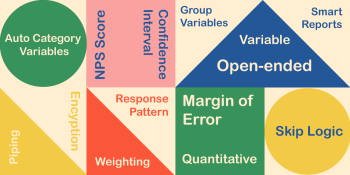Ever feel like second-hand data isn’t telling you the full story? That’s where primary research steps in. When you need original, specific, and timely insights—collected directly from the people who matter—primary research gives you a clear line of sight into real-world opinions, behaviours, and needs.
Whether you’re shaping a product, testing a message, or just want to understand your audience better, primary research is one of the most powerful tools you can use to make smarter, evidence-based decisions.
What is primary research?
Primary research is the process of gathering data directly from a source—whether that’s a customer, a community group, or your own employees. It’s “research done first-hand for the first time” with the purpose of answering a specific question or informing a particular goal.
Unlike secondary research, which involves analysing data already gathered by others, primary research puts you in control. You design the questions, select the audience, and decide how the data is collected and interpreted.
It’s how you get fresh, targeted insights—often the kind that doesn’t exist anywhere else.
Why use primary research?
Because sometimes you can’t rely on what’s already out there.
Primary research gives you:
- Direct answers to your specific questions
- Current data that reflects real-time behaviour and sentiment
- Control over how data is gathered and analysed
- Unique insights that your competitors might not have
It’s especially useful when exploring new markets, testing ideas, or fine-tuning decisions where accuracy really matters.
Benefits of primary research
Let’s break down why primary research is worth the effort.
1. Tailored to your goals
You’re not relying on general reports—you’re collecting data built around your needs.
2. Fresh and relevant
The data is up to date, not from last year’s market report or someone else’s audience.
3. Quality and reliability
Because you control the process, you can ensure rigour at every stage—from sample selection to analysis.
4. Personal connection
Engaging directly with participants opens up a richer understanding of their experiences, preferences, and pain points.
Types of primary research methods
Depending on your objectives, you might choose a structured survey or go deep with interviews. Here are some of the most common primary research methods.
Surveys and questionnaires
Efficient, scalable, and ideal for gathering quantitative data. Surveys help you measure things like preferences, satisfaction, and brand awareness—especially at scale.
Interviews
A one-to-one format that allows for deeper exploration of topics. You can run them in-person, over the phone, or online—structured, semi-structured, or completely open-ended.
Focus groups
Bring a group together and you’ll uncover shared themes, contrasting opinions, and sometimes the unexpected. Great for testing ideas or exploring reactions.
Observation
Rather than asking what people do, you watch them do it. Whether it’s shoppers in a store or users navigating a website, observational research shows you real behaviour without bias.
Experiments and A/B testing
Useful for measuring cause and effect. Whether you’re testing email subject lines or page layouts, experiments help you understand what works—and why.
Case studies
In-depth investigations of a single situation or subject. Great for exploring complex challenges and drawing out detailed insights.
Real-world examples of primary research
Let’s put it into context. Here are a few ways organisations use primary research:
Example 1: Customer preferences survey
A skincare brand wants to launch a new product. They run a survey to find out what customers care about—natural ingredients, sustainable packaging, price points. The results directly shape the product strategy.
Example 2: Product usability testing
A tech company A/B tests two different app interfaces. The version with clearer navigation and faster load times gets better results—so they roll it out across the board.
Example 3: Focus groups for product feedback
An electronics brand is exploring ideas for a new wearable device. Focus group participants reveal excitement about health tracking, but concern over data privacy. That insight informs the product’s features and messaging.
Each of these shows how primary research supports smarter, more user-centred decisions.
Primary vs secondary research
It’s not one versus the other—it’s knowing when to use each.
Primary research
- Collected directly from your audience
- Designed to answer specific questions
- Time-consuming but highly relevant
- Data is unique to your project
Secondary research
- Drawn from existing sources (reports, journals, stats)
- Helps build background or context
- Faster and usually cheaper
- May be less specific or outdated
In most cases, a combination of both gives you a well-rounded view.
Planning your primary research
A strong plan leads to stronger results. Here’s how to get started:
1. Define your objectives
What exactly do you want to know? Being clear about your goals helps you choose the right method and questions.
2. Choose your method
Do you need quantitative data or richer, qualitative insight? Surveys, interviews, focus groups and observations all have strengths depending on the situation.
3. Identify your audience
Who will you collect data from? Your sample should reflect the people whose opinions or behaviours matter most to your goal.
4. Design your tools
Write survey questions or interview prompts that are clear, unbiased and purposeful. Test them before you launch.
5. Collect and analyse
Run your research, gather your data, then look for patterns, insights, and opportunities that guide your next steps.
Are there any downsides?
As valuable as it is, primary research does come with trade-offs.
- It can be time-intensive
- There are costs for tools, recruitment, and analysis
- Poor question design can affect data quality
- It may not scale as easily as secondary research
- Results from small samples might not be generalisable
That said, the quality of insight often outweighs the effort—especially when the stakes are high or the question is too specific for desk research.
Final thoughts
Primary research gives you something no database can: direct access to the thoughts, needs, and behaviours of your audience. It’s how you go beyond assumptions and make decisions based on evidence—not guesswork.
How can Snap Surveys help
Primary research is not just a technical process—it’s a strategic advantage. In business, policy, education and beyond, gathering first-hand insights helps you move with clarity and confidence.
If you’re looking to conduct primary research, Snap Surveys can help you every step of the way—from designing surveys and interviews to collecting and analysing your data efficiently and securely.



